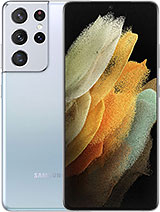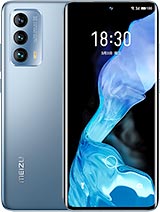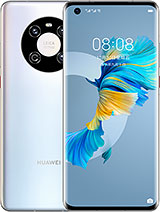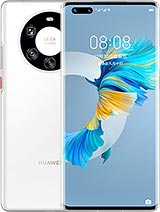Samsung Galaxy S21 Ultra vs Huawei Mate 40 Pro Camera Comparison By Grant Likes Tech
Space ring cameras or ultra cameras: this is my camera comparison between the Huawei Mate 40 pro and the Samsung Galaxy s21 ultra how's. Everyone here welcome back to another camera comparison, video with the Samsung Galaxy s21 ultra. Now, if you missed my previous comparisons up against the iPhone 12 Pro max and the pixel 5 I'll leave links in the description in case, you want to go check that out for yourself now today, I've got it up against some of the very best of Huawei, the mate 40 pro and that's not quite the best that Huawei has to offer. That would be the mate 40 pro plus, with its zoom cameras and that'll, probably be a better comparison up against this s21 ultra, but I don't have that, and I think the mate 40 pro still has a very good set of cameras, and I think it's going to be a good comparison up against the s21 ultra. So, like I always do, I'm going to show you a bunch of photos and videos in both good and low light conditions. So you can see for yourself if these cameras are performing well and which one might be better for your needs, so stick around to the end, and I'll.
Let you know how I think each of these cameras performed so let's go ahead and check out all the photos and videos so do hi everyone, so here are in the park with the usual video test that I do with the s1 ultra and the Huawei Mate 40 pro starting out at 1080p, with the ultra-wide angle lens on each to give you an idea for what that looks like here on each of the phones and as you can see, the s21 ultra has a wider field of view from this ultra-wide angle. Camera here, what's nice is, I can actually switch between the lenses while recording, so we can go to the main lens there in one tap on the s20 ultra on the mate 40 pro it's more of a smooth zoom. So I can go into one times here. So that's going to be the main lens on the mate 40 pro at least it should be I'll pan around. So you can see what that looks like here on each of these phones, and I'll pan over here to the right, and we'll test zoom out on that cell tower, so one tap to get to a three times optical here on the Estonian ultra and the mate 40 pro has a five times telephoto.
So let's move into that as good as we can here, since it's not a one tap thing, so there is five times there on the mate 40 pro. I can go to ten times optical here on the s21 and let's see we can go all the way up to 15 times, zoom digital there on the mate 40 pro, and we can max the zoom out here on the s1 ultra at 20 times. So that's 20 times digital on the s1 ultra and 15 times on the Huawei, the viewfinder. The Huawei is looking much more stable here, so we'll back up to the main lens on the s21, and we'll go out to one times here on the mate 40 pro, so we'll test autofocus here on the post, so s21 really snappy, focus and refocus here and a nice background blur or both as well, so mate 40 pro also pretty quick, autofocus and refocus, as we can see there, and we'll go ahead and test stabilization here as we walk down the stairs. So let me know if you see any differences in the stabilization here on each of these phones, as I pan up, and we'll see how the exposure adjusts for this afternoon, sky, hey everyone, so we're back with the same test this time at 4k, 30 frames per second.
This is the main lens on each of these phones. So you can see what that looks like here. As I start, panning around, and I'll go ahead and pan to the right, and we'll test zoom here in 4k, so first with the s21 ultra three times optical there and let's see if we can move into a five times optical here on the mate 40 pro which should be right about here. There we go. That's what that looks like, and I can go one tap to go to the 10 times optical lens here on the s21 ultra, and we can do a smooth zoom in here on the mate 40 pro all up to 15 times, and we can max out the zoom here on the s21 again at 20 times digital and that's what that's going to look like.
There see the picture just cleared up, although shaky on the s21, and you can see here on the mate a little more stable. So, let's back up to the main lens on each so one tap to get back on the s21 and let's go all the way back here on the mate 40 pro and that should get it right there. So, let's test autofocus on the post. First, with the s21 still nice and snappy here in 4k and mate, 40 pro again fairly snappy, although it looks a bit grainy actually at least in the viewfinder kind of goes in and out of focus a little, you can see there we go and one more time, so there we go so kind of goes in and out a little a little more finicky here on the mate 40 pro there we go and let's go ahead and test stabilization, walking down the stairs in 4k, and so we'll pull up at the end of this path, and we'll point up at the sky and see how the exposure does into the afternoon sky again here in let's 4k, so hey everyone. So here's some video from the front-facing cameras on the s21 ultra and the Huawei Mate 40 pro.
This is 4k 30 frames per second and, as you can see, I'm outdoors in some shaded areas. You can see what some even lighting looks like here on each of these phones and the m840 pro can actually switch between some wide angles here. So this is the main one time. That's a little wider field of view, so you can see what that looks like against the s21 ultra and I can go up to a full wide angle here on the front facing camera on the 840 pro. So this could make a very good vlogging camera if you want to fit more into the picture here with the mate 40 pro, but I'll go switch into the main one times mode here.
So we can see what that looks like and compare that one to one with the s21 ultra, and I'll pan around. So you can see what the changing light condition here does to the image quality, and especially this way where you see the sun behind me, and I'm much more in the shade. You can see the s21 clear that up a bit while the mate 40 pro is still very much blown out, and we'll pan around this way, and I'll start walking through that stabilization here. So as I do, this you'll start to see the afternoon light creep in from and go in and out. So you can see what that does the image quality here, as well as comparing the stabilization.
So let me know what you think about the front facing cameras here on the s20 ultra and the m840 pro hi everyone. So here's a low light test between the s21 ultra and the Huawei Mate 40 pro starting out with the ultra-wide angle lens on each at 1080p here and see what that looks like it'll, pan up into the sky and towards that light. So you can see how each of these cameras are handling that, and I can switch into the main lens on each so main lens on the s21 ultra and then let's try to zoom in here to the main lens here on the Huawei and there we go so main lens on each camera here, and you can see how the main lens is now handling that really bright light. There they're both kind of flaring out a little, but again that's a pretty bright light. So, let's pan around this way, and we'll start testing stabilization as we walk, and we'll see how each of these cameras handle moving from this brighter area over to a little darker area, so we'll test the light transition here on each of these cameras- and let me know what you're seeing as far as stabilization as well, like, I always say, pay attention to any kind of micro jitters that you might see here in low light.
That's fairly typical, as you can see here, as we pan go around the corner here it gets much darker. You only have these lights on the sidewalk here, and we'll pull up and pan up into the night sky, where we've got some pretty good cloud cover right now, so you can see the definition of the clouds there, and I'll pan over here where we have a little more light. So you can see what that looks like here in 1080p ever, so we're back with the same test in low light, this time at 4k, 30 frames per second on the s21 ultra and the mate 40 pro here again we're starting out with the ultra-wide angle lens on each as we pan over this way and up into the sky and into that bright light. There I'll punch into the main cameras here on the s21 ultra, and we'll try to get into that main white here on the Huawei Mate 40 pro there. We go so main camera here on each phone, and we'll pan this way, and we'll test stabilization again this time in 4k, and we'll also see how this looks as far as light transition from fairly bright to pretty dark here in 4k.
So again, 4k should be looking darker than the 1080p footage and also pay attention to the stabilization. And what that looks like here on each and as you round the corner again much darker area here and at least the viewfinder, the mate 40 pro is keeping this pretty bright but fairly noisy, and I'll. Pan up into the night sky- and we can see the clouds and see if you can make out any kind of definition in those clouds in this low light, and I'll end up panning over here, where there's a little more low light. So you can see what this looks like in 4k downtown. I got that heat, let's go so! Hey everyone! So here are some front facing footage from the s21 ultra and the Huawei Mate 40 pro.
This is my usual low light test, and we're starting out at 1080p 30 frames per second. So, as you can see, we're in some fairly decent lighting around here and the mate 40 pro actually can switch between some front facing lenses. So this is the one times mode. This is the little wider mode, and this is the full wide. So this will make a pretty good vlogging front-facing camera.
You get a very wide field of view, so you fit more in the frame, and this could be ideal if you like to vlog with your front-facing camera, so I'll go back and punch back into the one times. So we can see that compared to the iPhone here, and you can see what these bright lights around me and behind me look like and how the front-facing cameras are handling that, but we'll go ahead and start walking to that stabilization, and we'll also walk into a bit of a darker area. So you can see what these front-facing cameras look like in a bit of a darker light and scenario, so we'll also be passing by a fountain to my right. So you can hear what that sounds like, and we'll test the audio on each of these phones, and you hear what that sounds like when you have something interfering with your voice. You can see here it's a bit darker, but I'll go ahead and pan around, because we've got some really bright lights behind me.
You can see how these front facing cameras are handling that any lens flaring that you might see there, and I'll go ahead and pan back around this way, and we'll step back into this darker area. So we can see what that looks like here on each of these front-facing cameras. So let me know what you think about the low-light test on the front-facing cameras on each of these phones: everyone we're back with the same low-light test this time in 4k, 30 frames per second on each of the front-facing cameras. Again, the Huawei can switch between the different angle modes here. So this is your full one times and that's what that looks like compared to the iPhone, and we swap out to this point eight, which is a little wider.
Obviously you can see what that looks like and, lastly, full wide, so you can fit a lot more in your view and in the frame now I'll go back and punch back into the one times mode here on the Huawei, and you can see what the lighting around me looks like here at 4k, and I'll go ahead and start walking. So you can see what the stabilization looks like in 4k on each of these front-facing cameras and once again, we'll be moving towards a little darker area, and this 4k footage should be looking darker on both of these phones. That's very typical, and again we have the fountain to my right, so you can hear what that audio sounds like, and we're now in that bit of a darker scene here, and I'll go ahead and pan around again. So you can see what the bright lights are. Looking like here in 4k on each of the front facing cameras, and we'll once again end this in the darker area here.
So you compare what those look like here in 4k everyone so now, you've seen all the photos and videos for yourself. Let me know in the comments what you think, which one did you prefer and why now for me personally, I think the s20 on ultra did a little better here overall and that's just my personal preference, but there's a lot of areas where the mate 40 pro did very well. So, let's break this down a little, starting with the rear facing cameras for photos during the day, I think they kind of went back and forth as far as looks sharpness and even detail. They really did go back and forth there and the colors are just going to come down to what you prefer to see, because neither were really 100 accurate. I think accuracy and what was real to life was probably somewhere in between the two.
But if I had to pick one, I think maybe the mate was a little closer to the realistic colors there and as far as their ultra-wide cameras, I prefer that on the s21 ultra overall, I just like the wider feel to do. I like the look and the colors and what's coming out of the s9 ultra more than I did on the mate 40 pro for that ultra-wide. Now, as far as the video was concerned, this is where I was actually surprised, because I've heard a lot of things where Huawei video is not very good. But to me, as far as my eyes, the mate 40 pro video looked just fine, I think again the colors are going to go back and forth and somewhere in between is what natural really was pretty much just like how it was for the photos. So I think it's just going to come down to what you prefer to see there.
I thought they both performed fairly well, and I think the stabilization goes probably to Huawei. I think s21 ultra needs a little more improvement there in the stabilization. Now, as far as the low light photos from the rear facing cameras, I think they pretty much also go back and forth. The mate 40 pro is brighter without night mode. So, if you don't want to always activate night mode, you want brighter looking photos and low light.
You're, probably like the mate 40 pro. If you want something, that's a little closer to realistic without night mode, you're, gonna, probably like the s21 ultramore and as far as night mode, they both perform pretty well. Here I do think the s1 ultra night mode is a little better. Just a little cleaner overall than what I was seeing from the mate 40 pro now front facing cameras. Overall, I do like the look.
That's coming out of the s1 ultra more than the mate 40 pro, but I like the versatility on the Huawei as far as that field of view where you can go into a wider field of view from the front facing camera there. So if you want to fit more in your frame from the front facing camera, you'll, probably like the mate 40 pro, but just from pure looks alone, skin tones and everything color reproduction, I liked the s20 ultra more for the front facing camera. So that's just what I think about how each of these phones performed here. I think the mate 40 pro has a great set of cameras and even the zoom computed very well up to five times anything past five times. You could clearly tell that the s7 ultra was better.
It was gonna, have less digital, sharpening and everything else, but up to five times the mate 40 pro competed very well. So again, that's what I think about how each of these cameras performed. Let me know in the comments what you thought and which one you preferred and let's continue our conversation down there and as always, thanks for watching maybe the mate 40 pro was slightly more realistic, but really ah try it now, as far as what I think just to keep it kind of short here. Try them.
Source : Grant Likes Tech
































